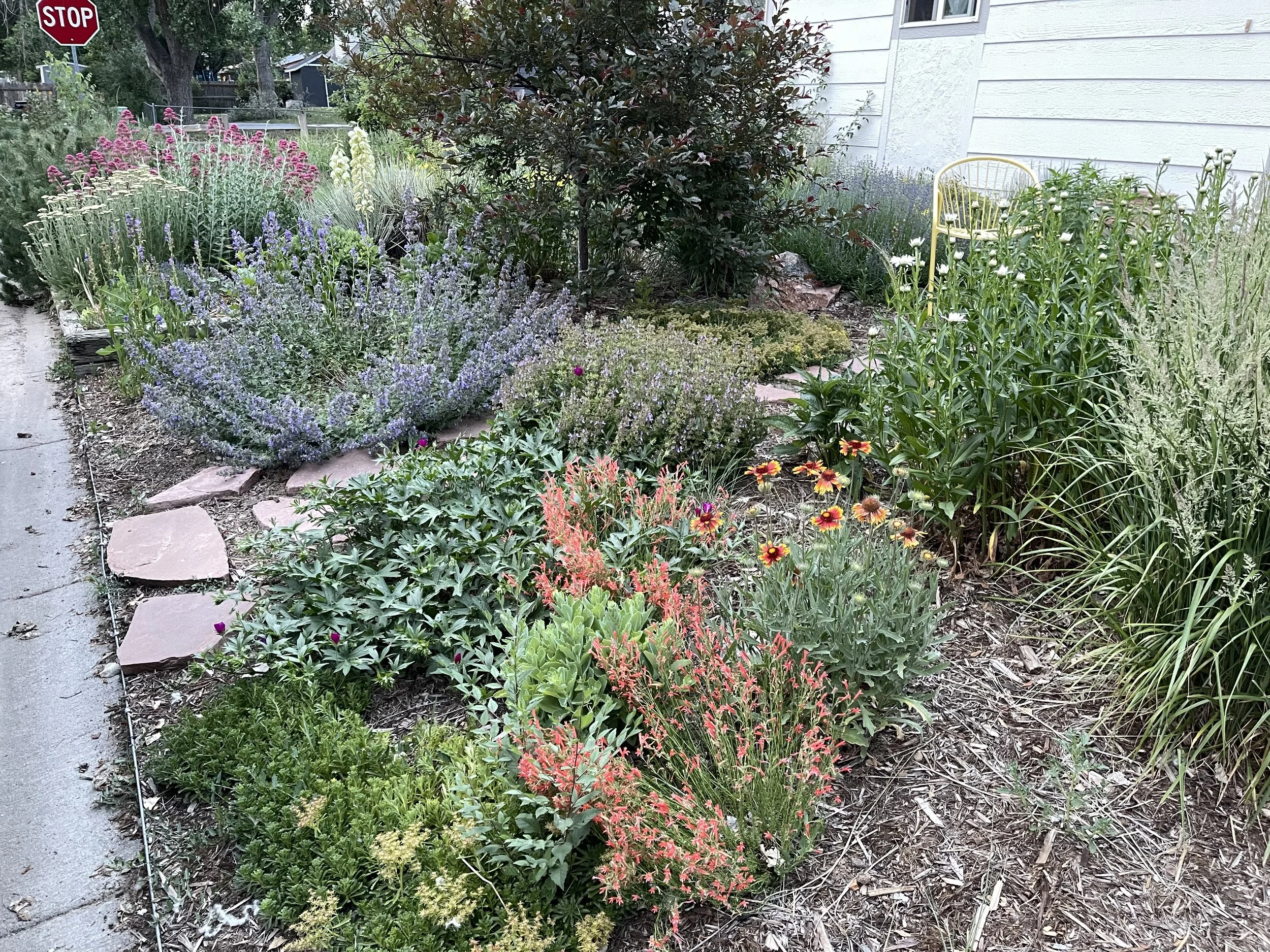Native Habitat, and How to Build It
My (semi)native garden is a work in progress — and yours can be too!
What to do in your native garden right now
Do not tidy up! Last year’s leaf litter and matted stems are blue-ribbon nurseries for native insects. Hide your rake.
Avoid “native” wildflower mixes. Shockingly(?), these contain a high percentage of non-natives.
Plan your habitat. Use the right flower in the right place and pick species familiar to the bees, butterflies, and birds that live around here.
Get involved. Hit me up at friendsofcoalcreek@gmail.com if you want to volunteer as a neighborhood habitat lead.
Habitat will be a central pillar of Friends of Coal Creek, for at least two reasons: There is less and less of it for wildlife these days, and it’s relatively easy to influence for the good (well, it’s relatively easy to influence either way, but we’ll focus on the good).
But first, we need to go on a little journey. Imagine yourself as a bee. No, wait! Imagine yourself as a flower. A gaillardia flower. It’s July and it hasn’t rained in ages, but you’re adapted to that. Your wide flower opens in a tapestry of yellows encircling reds. You think you might be called a bullseye flower, if you weren’t already popularly known as a blanket flower. Another full-sun morning starts windlessly and quiet with only the peep of tentative birdsong interspersed with the whoosh of commuters driving to work.
You of course have no ears, but your ability to sense is astounding. You feel the first rays of sun on your leaves and open the little stomata on them to exhale as the buzz of solar energy fills your cells. This first bit of blue light is like your morning coffee and baby, this is living. Soon sugars are moving to your roots and moisture is moving up from them. The soil is hardpack and clay and yet your root tips reach into it as easily as toes go into sand. You are part of a sensing network of roots and fungus and all is well in the underland today. The fungi are not pushing for more sugar production; there is only the background level of need. And then you feel a touch.
Another day in paradise for Gaillardia x grandiflora and the bee that alit inside its flower.
Image by C T Johansson, used under CC BY-SA 3.0
Your flower’s stem bows a bit under the weight, but it’s a gentle sway. Familiar. This is a friend and there’s no need to activate defenses or shut down the sugar factory in the leaves. The bee lands as if a person in a mattress commercial. She folds in her wings and luxuriates in the pollen sticking to her body. This is living for her, too. You feel your stem sway again as she takes off, bound for another plant. For there are many and the summer is long but not long enough to be lazy.
Well, that was refreshing.
Plants form the basis of all terrestrial life on this planet, and so to support terrestrial life you need plants. Further, to support native wildlife you need native plants, which are generally easy to care for and undemanding anyway. If enough of us start to accept life and motion as our ideals of beauty, we can create a network of habitat that supports the pollinator lives that are here with us. Strategic patches of well-considered plants can bring back the bugs that used to share this land with us before we were led into a vision of beauty that relies on chemicals and weekend time and conformity – what we as a society consider a beautiful lawn somehow looks exactly the same from Los Angeles to Boston.
I’m currently enrolled in a program with the Butterfly Pavilion to learn how to teach habitat building and partnership with pollinators. I’ll be holding workshops during planting season. But if you’re at all like me, you’re itching to get in the dirt now. However! I must caution you to wait. Please!
Do not tidy up your garden
Yes, this is hard, but insect eggs are inside leaf litter that has sat on the ground since the fall. Stems of last year’s flowers form perfect egg chambers for native bees. The general ugly, matted vegetation from last year’s garden is a blue-ribbon nursery for native insects. Only make exceptions to clear spaces for your early spring flowers, and even those not yet. If you can wait to clean your garden until Mothers Day, you’ll have done your insect neighbors an immeasurable service. Sit on your hands, hide your rakes, whatever you have to do.
Stay away from “native” wildflower mixes
These seem like an easy way to add flowers to big spaces, but if you look carefully, most packages contain a lot (sometimes even majorities) of non-native plants. Those may be pretty to your eye, but to our native insects, it’s like trying to read a highway sign in an unfamiliar language. They miss the exit everytime.
Plan your garden to support beauty and your pollinators
There are innumerable resources on this, but this is a great one compiled by Boulder naturalist Dave Sutherland. Native plants are generally unfussy, generally not thirsty, and can be selected to fit any mix of sun, shade, wet or dry we have around here. Plants are the basis of the habitat. Plant local.
And keep coming back. I’ll be adding information as planting season gets on to help steer the habitat drive. If you are interested in a workshop on this, drop me a line at friendsofcoalcreek@gmail.com.


